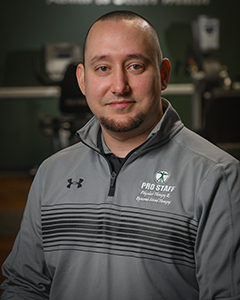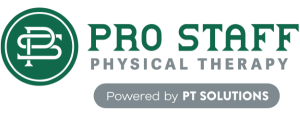10 Ways to Improve Your Running

Did you know that running is a popular form of exercise for both recreational and competitive runners, but it can also lead to injuries if not done correctly? Running is a fantastic way to stay active and healthy, but taking steps to optimize your performance and reduce the risk of injury is essential. Whether you’re a beginner or an experienced runner, incorporating these tips into your running routine can help you become a better, more efficient runner. In this article, we will cover various aspects of running and how implementing Pro Staff Physical Therapy training can enhance your running performance and minimize the risk of injuries, allowing you to enjoy the benefits of this popular form of exercise to the fullest.
10 Ways to Improve Your Running
Running is a popular form of exercise that offers numerous health benefits, including improved cardiovascular fitness, increased muscle strength, and stress reduction. If you’re looking to enhance your running performance, here are some tips to help you improve your running:
- Establish a running routine.
- Warm up and cool down properly.
- Incorporate strength training.
- Focus on proper running form.
- Gradually increase mileage and intensity.
- Cross-train.
- Listen to your body.
- Wear appropriate running gear.
- Fuel properly with a balanced diet and hydration.
- Rest and recover.
Improving your running performance requires consistency, proper form, strength training, gradual progress, and taking care of your body through rest and recovery. Consider incorporating these tips into your running routine to help you become a better, more efficient runner and reduce the risk of injuries. Remember to listen to your body, consult with a professional physical therapist if needed, and enjoy becoming a better runner!
What are Some Stretches to Improve Your Running?
Stretching can help improve flexibility, mobility, and muscle balance, essential for efficient running. Here are some stretches that can help you improve your running:
- Hamstring Stretch: Sit on the ground with one leg extended in front of you and the other bent with the foot against the inner thigh. Lean forward from your hips, keeping your back straight, and reach towards your toes. Hold for 15-30 seconds and repeat on the other side.
- Quadriceps Stretch: Stand tall and pull your ankle towards your glutes, keeping your knees close together. Hold for 15-30 seconds and repeat on the other side.
- Calf Stretch: Stand facing a wall with your hands resting on the wall for support. Step one foot back, keep the heel on the ground, and bend the front knee. Lean forward, feeling the stretch in your calf muscle. Hold for 15-30 seconds and repeat on the other side.
- Hip Flexor Stretch: Kneel on one knee with the other foot in front of you, ensuring your knee is directly above your ankle. Lean forward, keeping your back straight, and feel the stretch in the front of your hip. Hold for 15-30 seconds and repeat on the other side.
- IT Band Stretch: Cross one leg over the other and reach towards the opposite side with your arm extended. Lean to the side, feeling the stretch along the outside of your thigh. Hold for 15-30 seconds and repeat on the other side.
Remember always to perform stretching exercises in a pain-free range of motion and avoid bouncing or forcing your muscles into uncomfortable positions. Incorporating these stretches into your warm-up or cool-down routine can help improve your running performance, flexibility, and overall mobility, reducing the risk of injuries and allowing you to enjoy your runs to the fullest.
What are Some Exercises to Improve Your Running?
Incorporating specific exercises into your routine can also help improve your running performance. These exercises can target key muscle groups used in running, help you run more efficiently, and reduce the risk of injuries. Here are some activities that can help you improve your running:
- Plank: Strengthen your core for proper running form and stability. Start in a push-up position with forearms on the ground, hold for 30-60 seconds, and repeat for 2-3 sets.
- Glute Bridge: Improve your stride and running efficiency by strengthening your glutes. Lie on your back with your knees bent, lift your hips towards the ceiling, and lower back down. Perform 10-15 reps for 2-3 sets.
- Single-Leg Deadlift: Enhance balance and stability while targeting the glutes, hamstrings, and lower back. Stand with feet hip-width apart, lift one leg, hinge forward at the hips, and return to starting position. Perform 10-15 reps on each leg for 2-3 sets.
- Lunges: Strengthen quadriceps, hamstrings, and glutes, essential for running. Step forward with one leg, lower body towards the ground, and push through the front foot to return to starting position. Perform 10-15 reps on each leg for 2-3 sets.
- Plyometric Exercises: Improve power and explosiveness for faster and more efficient running. Start with lower intensity and gradually increase. Examples include box jumps, burpees, and jump squats.
Remember to use proper form, start with appropriate weight or intensity, and incorporate these exercises into your routine along with stretching for improved running performance and reduced risk.
How Can Physical Therapy Improve Your Running?
Physical therapy can help improve your running in a few different ways.
The first way is through strengthening exercises that help you build muscle strength in your legs and hips, which could help you run longer distances without getting tired. This may seem obvious, but it’s still a good idea to work on these exercises at least once a week so that your muscles stay strong and flexible.
Another way physical therapy can improve your running is by helping to improve flexibility in muscles and joints that are often tight or stiff. It’s important not to overdo this part of the process—you don’t want to get injured—so make sure you listen to your doctor or therapist about when to stop doing specific stretches or exercises (like yoga).
Finally, physical therapy can also be helpful for runners who have injuries or conditions related to their feet (like Plantar Fasciitis). Physical therapists can work with runners who have had issues with their feet recently—such as plantar fasciitis—to determine the best treatment plan for them.
Why Choose Pro Staff for Physical Therapy to Improve Your Running?
Pro Staff Physical Therapy is a trusted source for running and walking recovery. Our team of physical therapists, athletic trainers, and exercise physiologists have helped thousands of runners and walkers improve their running performance, reduce pain and injury, and increase joint health. We are the first choice in sports medicine for people who want to get back on track after injury or surgery.
Our team employs cutting-edge tools like ultrasound therapy and deep heat therapy to help you recover faster from injuries like ACL tears and Achilles tendonitis while avoiding long-term damage. Contact us today!
Pro Staff Institute, LLC, has a network of outpatient physical rehabilitation centers in New Jersey. Pro Staff was founded in 2010 by Frank Pavlisko and Michael Maffucci. Through Frank’s 25 plus years experience in Physical Therapy and Michael’s experience in Management Services, our goal is to exceed customer expectations by providing the highest quality of service in a fun, family, friendly, and encouraging environment.
PRO STAFF LOCATIONS
OFFERING CERTIFIED
HAND THERAPY
Managing Diabetes: The Role of Physical Therapy
Managing Diabetes: The Role of Physical Therapy As of 2024, approximately 38.4 million Americans, or 11.6% of the U.S. population, have diabetes. Of these, 29.7 million cases are diagnosed, while an estimated 8.7 [...]
Staying Active and Injury-Free During Summer Activities
Staying Active and Injury-Free During Summer Activities Summer is a fantastic time to engage in outdoor sports and physical activities. Whether playing soccer, tennis, cycling, or jogging in the park, staying active is [...]
The Importance of Posture: How Proper Alignment Can Prevent Pain and Injury
The Importance of Posture: How Proper Alignment Can Prevent Pain and Injury In today's fast-paced world, where many hours are spent over desks, smartphones, and computers, posture is often neglected. Poor posture can [...]




